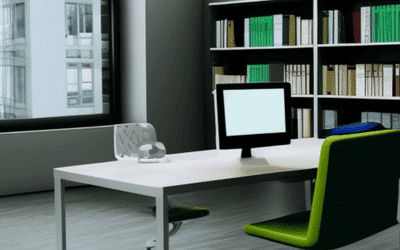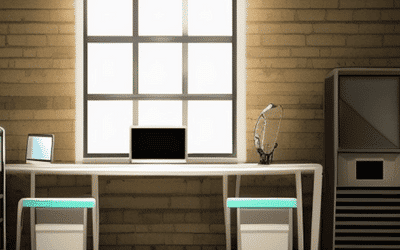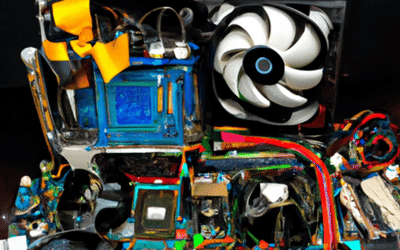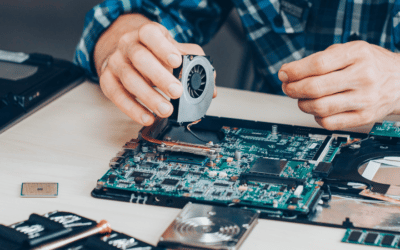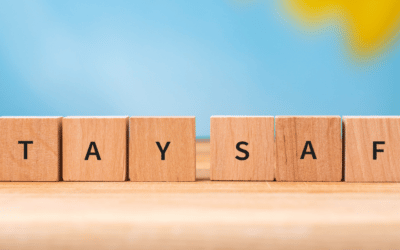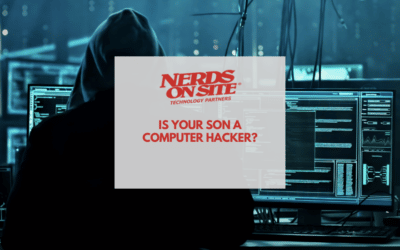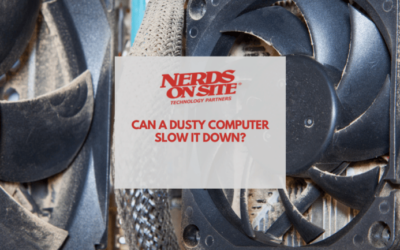It’s happened to all of us: you sit down with the intention of doing some work on your computer, only to see nothing but a black screen when you try turning it on.
Article Contents
In 95% of cases where a computer or laptop simply won’t turn on, it is due to power (hydro) issue, like power surges or brief brownouts.
Will A Power Surge Damage My Computer?
Power outages themselves will not usually cause any damage to your computer hardware. However, in some cases power outages are also accompanied by power surges—it’s those surges that you need to worry about damaging your computer (and other electronics).
A power surge can have a number of consequences for your computer, including:
- Damaged motherboard
- Damaged hard drive
- Slow performance
- Inability to hold a battery charge
To avoid these problems, it’s a good idea to use a surge protector with your computer, whether it’s a desktop or a laptop. This will help make sure that if there is ever a power surge, your computer is protected and doesn’t take the brunt of any electrical damage.
Keep in mind, even if you have a ‘proper’ surge protector, if the power is off for even a few seconds, it can have an effect on your computer. Even if your computer isn’t damaged, it may give you issues booting up after an outage.
The good news is there are some simple tests you can try to get your computer up and running again.

What To Do If Your Computer Won’t Boot After A Power Outage
First, try turning on your computer: if the ‘green’ light comes on and you can hear the fan, but nothing happens—it’s a sign your computer has been affected by a power surge or outage.
- Unplug the big black power cable from the back of the computer. If it’s a laptop, remove the battery as well
- Hold the ‘on’/power button your computer
- Wait 5 seconds
- Press the power button to ‘turn off’ your computer
- Plug in the big black power cable from the back of the computer again
- Turn on your computer
If this fixes the issue, you should be fine. You have just purged the “dirty power” from your computer, and your computer power supply is fine. The same could be accomplished by letting your computer sit turned off for several hours or days, but who wants to wait that long?
If that solution doesn’t work, or the lights and fans don’t turn on when you try turning on your computer, there are a couple other fixes you can try to diagnose the problem:
Check Your Power Source
If your computer won’t turn on at all, check the outlet, powerbar, or power source it is plugged into. If it is plugged into a surge protector, it’s possible that it was tripped during the power surge.
To test, remove any power strips, battery backups, or other power sources, and plug your computer directly into a wall outlet. If your computer starts after doing this, it means a surge may have fried whatever power source you were using and will need to be reset or replaced.
Check Your AC Adapter
If your laptop battery doesn’t seem to hold a charge, your AC adapter may have been damaged by the surge. Dirty power from power surges or brownouts can also affect your AC adapter, causing it to stop properly charging your battery.
Check Your Battery
If you’re working with a laptop, take out the battery and try booting it using AC power. If your computer starts up without any problems, it is likely an issue with your battery and will need to be replaced.
Check Your Computer Fans
If your computer’s fan doesn’t start when your power supply is turned on, it could mean that your power supply needs to be replaced. Issues with the computer fan not running could mean there is a problem with the motherboard or CPU, which may need replacing.
Check your CPU (Central Processing Unit)
When the computer power is on, check for a green light on the motherboard by looking through the vents on the side of your computer.
If you see a flashing green light, the Power Supply Unit (PSU) likely needs to be reset. If there is no green light at all, the Switched-Mode Power Supply (SMPS) unit may have been damaged from the power surge and may need to be replaced.
Call Your Local Nerd
If you’re not able to figure out why your computer won’t turn on, or aren’t sure how to fix the issue, a professional can help. Our team of Nerds will diagnose the problem and have it fixed to get your computer back up and running.





